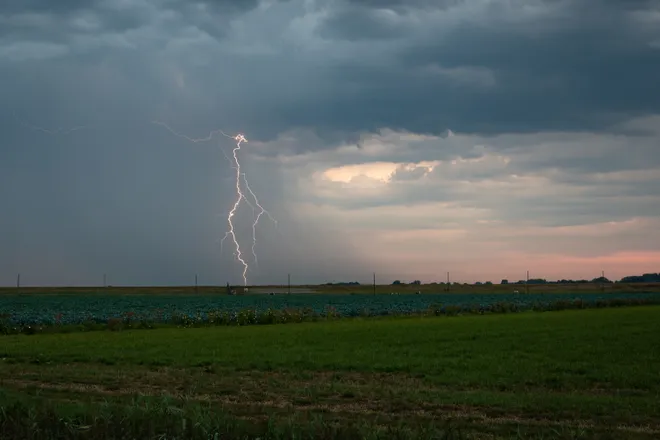Lightning strike kills Colorado cattle rancher, 34 of his herd; wife, father-in-law survive

A Colorado cattle rancher and 34 of his cattle have been killed after lightning struck over the weekend, according to the Jackson County Sheriff's Office.
Mike Morgan, 51, was feeding some of his herd with hay from a trailer on Sunday when the lightning hit near the town of Rand, about 80 miles northwest of Denver, the sheriff's office told news media outlets. Morgan died despite life-saving efforts.
George Crocket, a country coroner in the town of Rand, close to Denver where the farmland is located, told ABC News that Morgan's father-in-law and wife were nearby and survived. The strike also bowled over dozens more cattle gathered around the trailer waiting to eat, Crocket said.
The sheriff's office and Crocket didn't immediately respond to USA TODAY's request for comment.
Georgie Campbell:Equestrian star dies after fall during Bicton International Horse Trials
Where does lightning strike the most?
According to the National Weather Service, the most common time for lightning strikes is during the summer months, though strikes peak in June, USA TODAY previously reported.
Five of the top 10 lightning days in 2023 happened from June 14 to June 21 when the Northern Hemisphere experienced its highest temperatures. The most intense lightning storms ranged from the edge of the Rockies, through the Middle Plains and to the Southeast. Large thunderstorms in the Northern Plains and eastern states also contributed.
See our U.S. map of lightning hot zones.
How to protect yourself from lightning strikes if living in a hot zone
About 25 million ground strikes occur each year, the National Weather Service reports, and over the past 30 years, there have been 51 known fatalities. About 90% of those struck survive.
If living in a lightning hot zone of the U.S., here's what the National Weather Service suggests you do:
- When you hear lightning rolling in, seek out a place of shelter, preferably somewhere indoors.
- Don't use corded phones. Using a corded phone during a thunderstorm is one of the leading causes of indoor lightning injuries.
- Stay away from windows, doors and porches. It is best to be in an interior room during a thunderstorm.
- Don't touch electrical equipment or cords. Any device that uses electricity is susceptible to a lightning strike. If you hear a storm rolling in, consider unplugging devices, but not if lightning can be heard.
- Avoid plumbing. Metal plumbing and the water inside are both very good conductors of electricity. Do not wash your hands or dishes, take a shower or bath, do laundry, etc. during a thunderstorm.
- Refrain from touching concrete surfaces. Lightning can travel through the metal wires or bars in concrete walls and flooring, such as in the basement or garage.
- If inside a vehicle: Roll the windows up and avoid contact with any conducting paths leading to the outside of the vehicle (e.g. metal surfaces, ignition, portable electronic devices plugged in for charging, etc.).

Contributing: Janet Loehrke
Disclaimer: The copyright of this article belongs to the original author. Reposting this article is solely for the purpose of information dissemination and does not constitute any investment advice. If there is any infringement, please contact us immediately. We will make corrections or deletions as necessary. Thank you.





